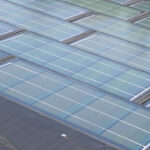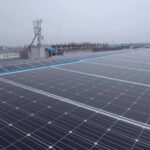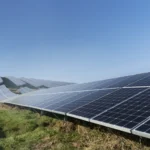Blame it on Sun! Average Solar PLFs not satisfactory
Blame it on Sun! Average Solar PLFs not satisfactory
Poor performance of solar projects has become a cause of worry recently. As a benchmark the large field based projects were expected to generate around 1500 kWh of electricity for each KW of solar panels installed in the Northern India. However the performance of these projects has not been satisfactory. The table below shows the actual number of units generated per kW of solar panels as recently announced by the Agencies for different Northern India states for the year 2012-13.
| States | Capacity (MW) | 2012-13 (PLF) | 2012-13: Equivalent kWh generated per kW |
| Haryana | 7.8 | 14.50% | 1270.2 |
| Punjab | 6 | 10.50% | 919.8 |
| Rajasthan | 11 | 16.00% | 1401.6 |
| Uttar Pradesh | 7 | 8.16% | 714.816 |
| Uttarakhand | 5 | 14.70% | 1287.72 |
Few solar plants have not reported data for all the months for various reasons. Overall the data has released for 69 power plants and the corresponding average PLFs of all the states for the year 2012-13.
Of course some of these projects have generated electricity as expected but many have not.
The performance of the project in terms of electricity generation depends on the quality of panel. It implies that a 15% efficiency panel should convert 15% of the radiation falling on it to the useful electricity. Also polysilicon panels should not be having performance degradation more than 0.7% to 1% year on year.
The electricity generation will also depend on the sun radiation available in that year.
Experts say that the generation also depends on the tilt of the panels installed. The radiation available on a flat surface would be significantly lower than that on the tilted surface.
Jury is still out to understand what caused the poor performance of these projects. A high radiation with humid condition does not support high generation for example.
Year 2013 remained a year when Indian witnessed an extra-ordinary monsoon. PID problem of Indian solar panel manufacturers still remain and need to be resolved.
For the time being we can blame it on Sun! Sun was not kind enough to provide sufficient radiation. Hopefully we get better radiations and better generation in future years and for the two years that have already passed.
Suggested Articles
Breakthrough in Solar Technology: 33.2% Efficient Perovskite-Silicon Cell
Scientists achieve a breakthrough in solar technology with a perovskite-silicon tandem cell reaching a record 33.2% efficiency for higher energy output.

Should You Replace Solar Panels with Solar Shingles?
Discover how solar batteries store excess energy, maximize your solar system’s efficiency, and provide reliable power during outages. Learn about the types, benefits, lifespan, and maintenance tips to make the most of your solar investment.

100 kW Solar Power Plant in Indore – Latest Cost, Subsidy & Payback Period
A 100 kW solar plant in Indore costs around ₹40–55 lakh in, offering annual savings of up to ₹10 lakh and a payback period of 4–6 years. Learn about installation, maintenance, and ROI to make your solar investment worthwhile.

Solar Net Metering in Industrial Units: Opportunities and Risks
Solar net metering can help factories save on energy costs, but there are key pitfalls to consider. Learn the challenges and best practices for industrial adoption

Stop Losing Power: The Ultimate Guide to Solar DC & AC Cable Sizing for Max Efficiency
DC and AC cabling are the lifelines of any Solar PV Rooftop System. Learn how proper cable selection, connection design, and installation can help achieve optimum power output and long-term safety.

Higher Electricity Bills in Haryana as Fuel Surcharge Rises
Haryana consumers are facing higher electricity bills after the Haryana Electricity Regulatory Commission (HERC) approved a fuel surcharge hike for DHBVN and UHBVN areas. The increase reflects rising fuel and power purchase costs, directly impacting domestic, commercial, and industrial users across the state.

India Raises Solar Purchase Obligation (SPO) to 8%: A Complete Guide
The Solar Purchase Obligation (SPO) in India is set to increase to 8%, pushing companies to adopt more solar energy. This guide explains the implications for businesses, compliance strategies, and how organizations can align with renewable energy targets.

The Rise of Clean Energy: Solar Energy Trends in 2023
The solar energy industry is on the rise, as the demand for clean and renewable energy sources continues to increase. 2023 is shaping up to be a big year for the solar energy sector, as new technologies and innovations are expected to drive growth and expand the reach of solar energy.